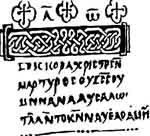About Nubia and its remnant language
Nubia is a region in Africa which starts from Aswan in South Egypt and extends along the Nile River into the whole land of the Sudan. During its shining time, ancient Nubia experienced multilingualism where many tongues co-existed together and were spoken by the early inhabitants. Currently, very few Nubian tongues are still spoken in the region. The Nubian Civilization is one of the ancient worlds’ civilization that prevailed in Africa from the Kermite Kingdom in 2500 B.C. to the Christian era in the sixteenth Century.
The Nubian languages may be the most historically important African languages that their origin date back to ancient times of the Nubian civilization. These languages preserve for us the history and the culture of ancient Nubia. Today these Nubian languages and tongues, are considered endangered languages. They are considered international heritage. The loss of these languages will disconnect us from a significant part of the African history and the global human history.




